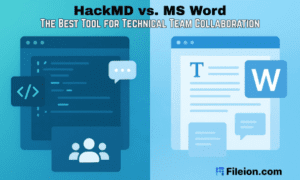The crypto sector in 2025 showed a significant rise in merger and acquisition activity. According to multiple reports, total crypto M&A activity has surged past $40 billion, driven by major players scooping up institutional infrastructure, exchanges, and regulated finance bridges. Q3 alone accounted for more than $10 billion in crypto M&A, pushing yearly totals beyond previous highs.
Several factors have contributed to the M&A frenzy. First, regulatory developments in the United States and Europe are driving greater cross-sector interest in digital asset companies. ETF growth has also expanded institutional demand, prompting firms to invest in infrastructure to support new financial products. Activity in Layer 2 ecosystems also grows, as rollup technology and sequencer operations create competition among scaling platforms. AI and crypto convergence also encourages acquisitions that combine model distribution, compute networks, and on-chain coordination. Well-known exchanges continue consolidating to maintain liquidity depth, expand derivatives markets, and reduce regional barriers.
The largest announced and completed deals
This section outlines the most significant acquisitions announced or completed in 2025. Each deal includes the transaction structure, the strategic rationale, and the expected impact on market participants.
Exchange acquisitions
Coinbase agreed to acquire Deribit FZE, a Dubai-based derivatives exchange known for its options and futures liquidity. The transaction value reached about 2.9 billion dollars, reportedly structured as a cash-and-equity deal. Coinbase expanded its presence in global derivatives markets through this acquisition, as Deribit serves both professional and institutional traders. The integration of Deribit’s infrastructure gives Coinbase additional depth in options and futures trading, which may influence liquidity formation and product availability across its platforms.
Custody/infrastructure mergers
Stripe acquired Bridge for approximately $1.1 billion. Bridge develops infrastructure for stablecoin issuance and multi-chain payments. Through this acquisition, Stripe gained direct control over an on-chain transaction system that aligns with its existing payments network. This provides businesses with additional tools for stablecoin settlement and cross-chain movement. The acquisition may accelerate the integration of blockchain-based payments within traditional commerce channels.
Institutional product expansion
FalconX acquired 21Shares, a well-known issuer of exchange-traded products tied to digital assets. This transaction allows FalconX to offer regulated investment products within an institutional framework. The combination of prime brokerage infrastructure and ETP structuring expertise positions FalconX to meet growing demand for token-linked financial vehicles. Institutions benefit from consolidated access to trading services, custody, and regulated investment products.
L1 / L2 ecosystem acquisitions
ConsenSys acquired Torus Labs, the developer of WebAuth infrastructure for wallet authentication. The deal size reached approximately $15 million. Torus technology supports account-based authentication that operates across different applications. ConsenSys gains access to identity tools that strengthen wallet usability and align with its broader efforts in the Ethereum ecosystem. This acquisition reflects a move toward simplifying user onboarding in Web3 environments.
Cross-Sector / AI-Crypto Integrations
Abu Dhabi’s MGX fund committed two billion dollars in stablecoins to Binance. This transaction supports Binance’s strategic expansion and creates potential intersections between AI and blockchain computing. Although the investment is not a traditional acquisition, it influences the market in a similar way by concentrating capital within a major global exchange. It also aligns AI development funding with ownership of blockchain infrastructure.
Cross-border and regulatory-driven deals
Regulatory environments across major regions influenced acquisition strategies. The United States introduced more consistent oversight for stablecoins, custody standards, and derivatives markets. Ripple’s acquisition of the prime broker Hidden Road occurred in this environment. Hidden Road already maintains relationships with institutional clients that operate in both traditional and on-chain markets, which made the acquisition a natural fit.
In Europe, MiCA and Electronic Money Institution (EMI) regulations shaped the behavior of firms that operate ETPs, wallets, and custodial services. Investors targeted regulated entities to ensure alignment with future licensing requirements. Meanwhile, the Middle East saw increased deal flow due to active licensing frameworks in Abu Dhabi and Dubai. These jurisdictions attracted capital pools that seek operational clarity and access to compliant global platforms.
Compliance-focused acquisitions also gained traction. Firms active in KYC systems, AML monitoring, and on-chain analytics saw higher demand from exchanges and fintech businesses that prepared for more stringent regulatory standards.
Other exchange trends
Market data indicates that more than one hundred acquisitions occurred across the crypto ecosystem in the first part of the year. While not all deals are disclosed to the public, exchange operators actively acquire regulated brokerages and regional derivatives providers. This pattern supports broader market access and strengthens compliance capabilities in jurisdictions with stricter licensing requirements.
Token-related components of M&A
Several transactions involved elements tied to tokenized economics. When Stripe acquired Bridge, the infrastructure that supports stablecoin minting became part of a broader payments network. This positioned Stripe to influence on-chain stablecoin circulation at the technical level.
Ripple’s purchase of Hidden Road also intersects with token activity. Hidden Road uses Ripple’s RLUSD stablecoin within collateral frameworks across its operations. This acquisition may shape RLUSD’s institutional utility while maintaining the broker’s existing client services.
Also reported was Kraken’s acquisition of NinjaTrader for $1.5 billion, which is a regulated U.S. futures brokerage
DAO-driven acquisitions appear less frequently in public disclosures this year, although token treasury allocations continue to play a role in certain protocol-level integrations. When projects use tokens for acquisition payments or incentive structures, treasury adjustments can alter the circulating supply. These changes often affect market liquidity for the respective tokens.
Acqui-hires and talent-driven M&A
Beyond big balance-sheet deals, 2025 sees talent acquisitions that will continue across Layer 1 and Layer 2 ecosystems. Foundations and infrastructure developers focus on engineering teams that specialize in rollup technology, wallet authentication, and AI-blockchain interfaces. The acquisition of Torus Labs reflects this pattern, since ConsenSys gains a team with specialized expertise in authentication design.
Compensation models in these acqui-hires combine equity, salary, and long-term token incentives. Teams that join larger ecosystem players often receive structured vesting plans that align with technical milestones.
Market impact analysis
What does the 2025 M&A wave mean for the broader crypto market?
Large acquisitions influence liquidity formation across major asset classes. When exchanges consolidate, order flow concentrates into fewer venues, which shapes spreads and market depth. Integration of derivatives and spot markets under a single operator can change the way liquidity providers allocate capital. User migration follows changes in platform ownership. Acquired platforms may adopt new compliance practices or product structures, which encourages some users to shift to alternative providers. Others may remain due to improved access to regulated services.
Fee structures also shift as operators integrate new systems. Larger firms often reduce operational costs by sharing infrastructure across business units. These adjustments affect trading fees, withdrawal fees, and derivatives funding models. Token markets sometimes react to M&A transactions, especially when the acquired or acquiring entity manages large token treasuries. Treasury realignments influence supply conditions, while integration plans can affect token utility.
Finally, acquisitions that strengthen custody, compliance, and settlement infrastructure support broader institutional adoption. Traditional financial institutions prefer environments with established risk controls, and acquisitions give them access to operational frameworks that meet their standards.

































